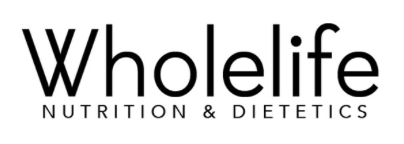IS SOY GOOD OR BAD FOR YOU?
Does soy cause cancer? Does soy cause infertility? Is it bad for you? Should I avoid soy if I have Endo/PCOS/Hypothyroidism? People are divided on this one! And let me tell you when I started going through the research behind soy and women's health-particularly for health conditions such as Endometriosis and Polycystic Ovarian Syndrome (PCOS), research is limited.
What is soy?
Soy is actually a legume! Unprocessed soy foods are traditionally popular amongst asian cultures, however with the rise of vegan and vegetarianism, it is becoming a go-to plant-based protein.
UNPROCESSED SOY FOODS:
Whole bean soy (tofu, soy nuts and edamame beans)
Fermented soy (miso, natty, soy sauce/tamari and tempeh)
PROCESSED SOY-BASED FOODS:
Processed foods (soy milk, cheeses, yoghurts, soy bean oil and meat alternatives)
Supplement form (soy protein isolate, textured soy protein, soy lethicin and soy isoflavones).
It is high in important nutritions such as PREBIOTIC fibre, vitamin, minerals, phytochemicals, good fats and a complete protein (complete proteins are foods which contain all the essential amino acids we need from our food because our body can't make them).
Estrogen + phytoestrogens
Ok, so we’re going to do another science lesson. Soy contains a phytochemical called phytoestrogens. These are compounds from plant (the prefix phyto- means plants) foods that are a similar chemical structure to oestrogen.
Phytoestrogens act like a (100x-1000x) weaker version of oestrogen in the body.
But, let's get a few things cleared up:
Phytoestrogens from FOOD we eat is different to SUPPLEMENTS containing phytoestrogens (soy protein isolates or isoflavone capsules)
Oestrogen has to bind to an oestrogen receptor (ER), much like a lock & key to be able to open the door, to be able to work. There are 2 types of ERs; ER-alpha & ER-beta. Because it is similar in structure, phytoestrogens can also bind to these receptors & then it determines if they have an agonist or antagonist effect (1).
Most of the concern lies around a flavonoids in phytoestrogens called isoflavones, so let's focus on this.
1 gram of soy protein = 3-4 mg of isoflavones
Now for what you really came to read this article for:
Soy, breast cancer + endometrial cancer
The Cancer Council of Australia has a Position Statement for Soy, Phytoestrogens and Cancer (click here). They summarise it beautifully so have a read. For those short on time read below!
“The Cancer Council supports consumption of soy foods, however does not recommend or support the use of supplements for healthy men and women, and breast cancer survivors to prevent cancer”
Additionally, women with past or existing breast cancer should be cautious of consuming large quantities of soy foods and phytoestrogens supplements (2)
For women who currently have breast cancer, animal studies show phytoestrogens (isoflavones) may stimulate the growth of tumours & antagonise tamoxifen (cancer medication). However, isoflavones can act differently in animals to humans so we can't take the results from this animal study and translate it to humans (3).
Also, breast cancer rates are low in asian countries where they eat a large amount of soy foods.
Additionally, there is insufficient evidence to say eating soy increases the risk of endometrial cancer (4).
Soy + PCOS
Good news for you, eating soy is found to improve insulin resistance, LDL-cholesterol, total cholesterol, triglycerides levels and biomarkers of oxidative stress (inflammation)! (11, 12, 13) The amount consumed was the equivalent of about 500 mL/d soy milk. But before you make any changes, see your dietitian with a copy of your results because this will determine your dietary management.
Soy + GMO's
Some of the benefits of soy were not found in USA where >85% of soy is GMO. If you live where there’s soy GMO-choose organic soy products. For those who are unsure, Australia does not currently produce GMO soy crops, but check ingredient list for imported soy products!
What are the benefits of eating soy?
Heart Health | It has been shown to improve the lipid profile (having good cholesterol levels) in people with heart disease, that is increasing the HDL(good)-cholesterol, lowering the LDL(bad)-cholesterol, triglycerides (TGs) and total cholesterol. They ate an average of 30g soy protein per day and was most effective when people ate the whole food, not soy supplements (note another arm of this meta-analysis study found isoflavone supplement did not have an effect on the lipid profile (14). I predict this is mainly because of the prebiotic fibre in the whole soy foods.
May reduce menopause symptoms
Improve insulin resistance
Fermented soy may be good for our gut
Before making your mind up on soy completely, ask yourself this, how much soy are you eating?
To put this in perspective, people in asian countries eat ~11-47mg/d of isoflavones, compared to ~1-2mg/d in western countries (15, 16).
LAST IMPORTANT NOTE: Soy contains phytic acid which will block/reduce the ability for your body to absorb iron and calcium. Heating and fermenting soy will breakdown the phytic acid-this is especially important if you have have low iron, poor bone health or low oestrogen levels.
If you found this help or know someone who does, please forward and share. If you have any questions, get in contact, I would love to hear from you. I hope you found this helpful.
Need help with improving your health? Click here to book an appointment
If you are unsure on what to do with soy, see a dietitian as it is individual and they will be able to assess your diet with your test results. The information here is not intended to replace individual diet and medical advice. Please see a dietitian or doctor to discuss the best treatment for your condition.
References
1. https://www.fertstert.org/article/S0015-0282(04)02356-8/fulltext
3. https://www.ncbi.nlm.nih.gov/pubmed/11573864
4. https://www.wcrf.org/dietandcancer/endometrial-cancer
5. https://www.ncbi.nlm.nih.gov/pubmed/16965913/
6. https://www.ncbi.nlm.nih.gov/pmc/articles/PMC5265693/
7. https://www.fertstert.org/article/S0015-0282(04)02356-8/fulltext
8. https://www.ncbi.nlm.nih.gov/pubmed/26097060
9. https://www.ncbi.nlm.nih.gov/pubmed/16571087
10. https://www.ncbi.nlm.nih.gov/pubmed/22908106
11. Jamilian M. The Effects of Soy Isoflavones on Metabolic Status of Patients with Polycystic Ovary Syndrome. J Clin Endo Metab. 2016;101:0000
12. https://www.fertstert.org/article/S0015-0282(07)03641-2/fulltext
13. https://www.ncbi.nlm.nih.gov/pubmed/22091248




